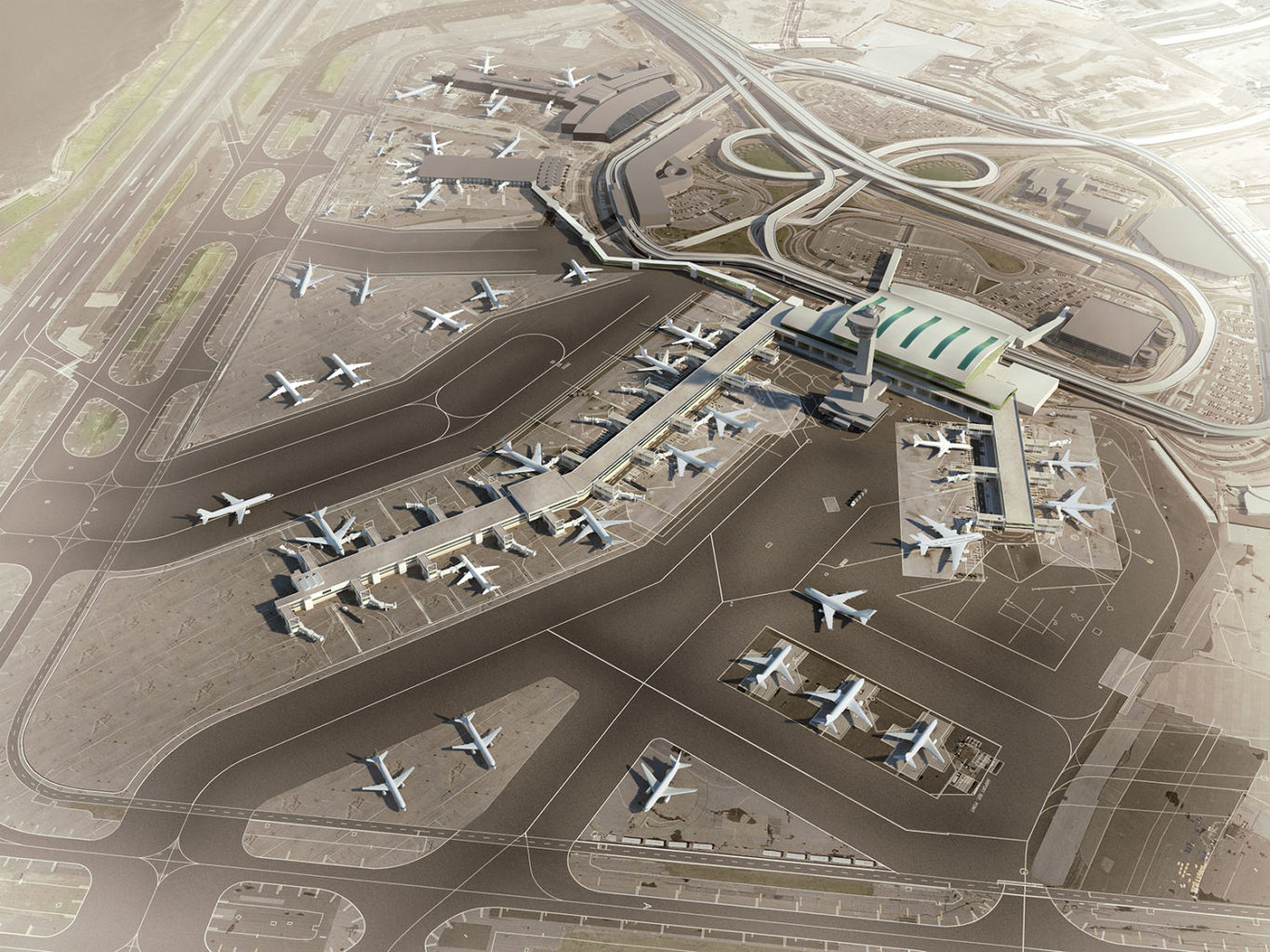
SOM, which has a long and productive history of work at JFK starting with the 1958 completion of the International Arrivals Building, was the lead planer and architect of the project, while ARUP acted as the building and civil engineer. This newest expansion continues to fulfill the original master plan for the terminal by strengthening support of operations within the context of the terminal’s central column-free space, with its plentiful views and natural light. The airside expansion, a nine-gate extension in Concourse B, provides necessary additional facilities for Delta’s fleet and helps realize Delta’s goal to build an international hub at JFK. Dual taxiways also help reduce aircraft taxi times and provide more efficient service. At landside, a new security area in the main departure hall reorganized the sequence of travel, allowing passengers to take advantage of the retail hall after clearance. A new domestic baggage claim hall, part of the original master plan, has been added, as well as larger areas for Customs and Border Protection. This expansion project replaces the 50-year-old Terminal 3, increases the size of the original Terminal 4 by nearly one third to 1.94 million square feet, and gives Delta the ability to accommodate all of their international flights from Terminal 4. It involves the extension and integration of existing services into one full-capacity facility, including: nine newly constructed passenger gates in addition to seven original, renovated gates; a new baggage system; and the consolidation of existing security checkpoints. Terminal 4 remained open and operational during the tightly choreographed phased construction process, which allowed team members to shift terminal functions from one area of the site to another in order to maintain a full flight schedule throughout the project.
Arup, a multidisciplinary engineering and consulting firm with a reputation for delivering innovative and sustainable designs, provided a full slate of services on this project, including structural engineering, mechanical, electrical, and plumbing (MEP) engineering; civil engineering; acoustics consulting; fire and life safety code consulting; geotechnical engineering; information technology and communications consulting; security consulting; integration management, and commissioning. SOM, a leading, architecture, interior design, engineering and urban planning firm, was the lead planner and architect for the Terminal 4 expansion. Project owner: Port Authority of New York and New Jersey Lease Holder/Facility Manager: JFK-IAT Design/Construction JV: ArupSOM General Contractor/CM: Headhouse: Lend Lease Concourse B: Turner Scalamadre Joint Venture CBP renovation: Turner Construction